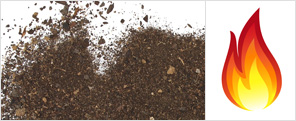 |
|||||||
|
The life blood of any hydraulic system is the hydraulic oil, which is stored in a reservoir that is part of the system. Like any mechanical system, hydraulic oil reservoirs must be serviced and maintained regularly to achieve optimal performance and service life at minimal cost. Establish a Schedule Other than storing and supplying the oil needed by your hydraulic system, the oil reservoir serves two main purposes -- to allow contaminants to settle out of the oil, and to dissipate heat. The two are related. If, for example, the reservoir is not cleaned regularly, its ability to dissipate heat will be diminished, which leads to overheating of the oil. Should the fluid temperature exceed the maximum recommendation (about 150°F) the oil can break down, adding to the problem of sludge in the reservoir. These extra particulates will, in service, circulate to other system components, foul them and potentially cause their premature failure or suboptimal performance. Hydraulic systems use strainers and filters to minimize this risk, and these should also be monitored. Inspect for Color, Foam, Blockages, Leaks Also examine the oil in the reservoir for signs of aeration. This can be done visually with a flashlight to see if there is foaming visible in the oil or if there is evidence of air being sucked into the suction strainer. Aeration can result from insufficient oil levels, an inappropriate viscosity, a compromised suction line, or faulty seals. All these must be checked if a problem is suspected. Once visual inspection of the oil is complete, the reservoir should be flushed/cleaned, inside and out. On the outside, make sure the air intake is free of any blockage. Clean the area around the fill cap and the oil level gauge. Examine, clean and replace filtering media as needed. Check the oil level and add new fluid as needed, being careful not to mix dissimilar oils. Obviously, when draining, cleaning and refilling your reservoir, the hydraulic system should be turned off. It is a good idea to drain the hydraulic oil while it is still warm to ensure that the particulates to be filtered are still in suspension. Look for evidence of any leaks that might be symptomatic of something that needs to be replaced or for general damage of any kind. If the reservoir needs to be flushed, clean replacement oil should be added and the system operated briefly to flush out contamination through the entire hydraulic stream. Then let the reservoir settle again and drain the reservoir. Clean out any additional internal contamination, replace the now-cleaned drain plug and re-fill the reservoir with cleaned or new oil, capping it with the now-cleaned reservoir cap. Clean, serviced equipment always outperforms dirty, neglected systems. Regular preventive maintenance by trained individuals is the key to efficient hydraulic system operation, longer service life for capital equipment, reduced consumables costs and worker safety. Acculube recommends regular oil analysis to determine your oil's condition; analysis will also indicate whether your hydraulic oil system or equipment is performing to specification.
|
|
||||||
|
|||||||
|
|||||||
Accurate Lubricants & Metalworking Fluids, Inc.• 403 Homestead Avenue; Dayton, Ohio 45417 USA • Phone: 937-461-9906 Fax: 937-461-9917
|
|||||||

